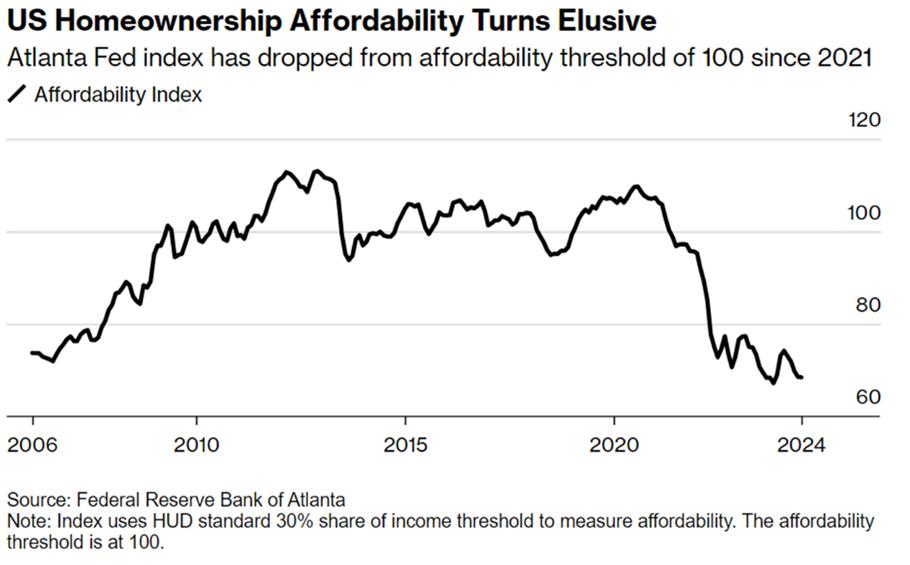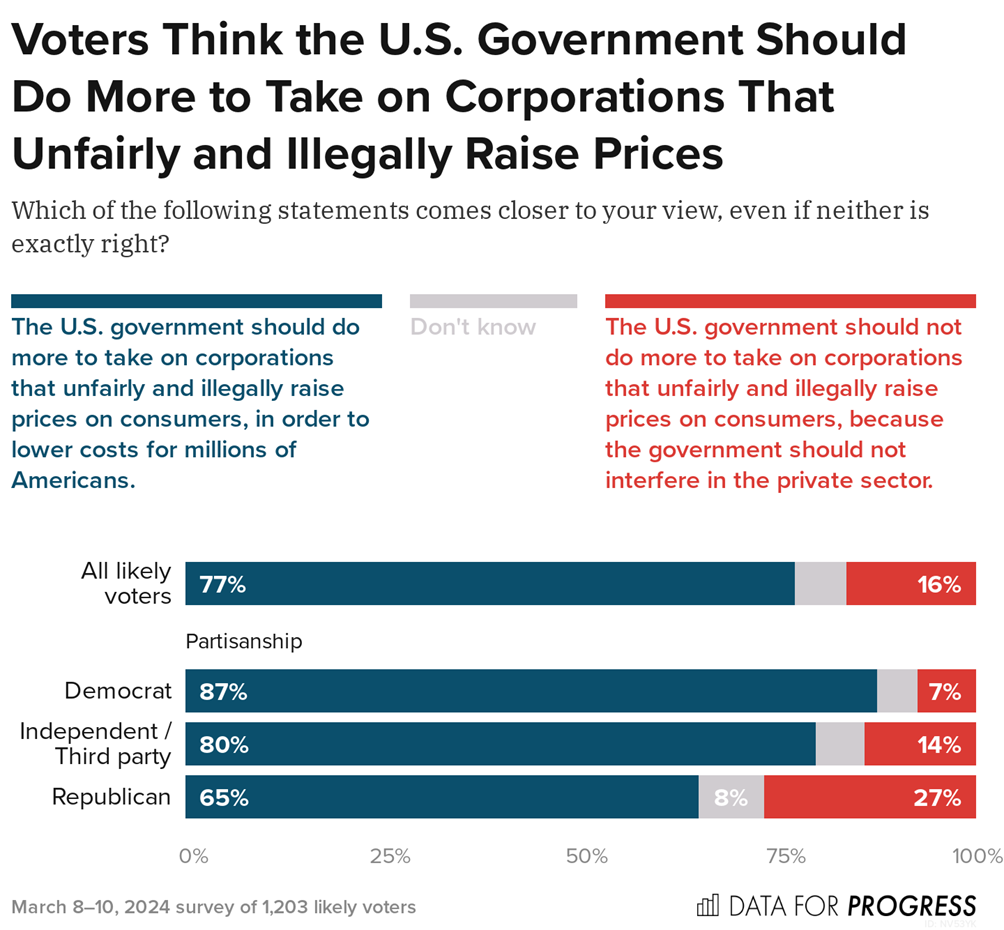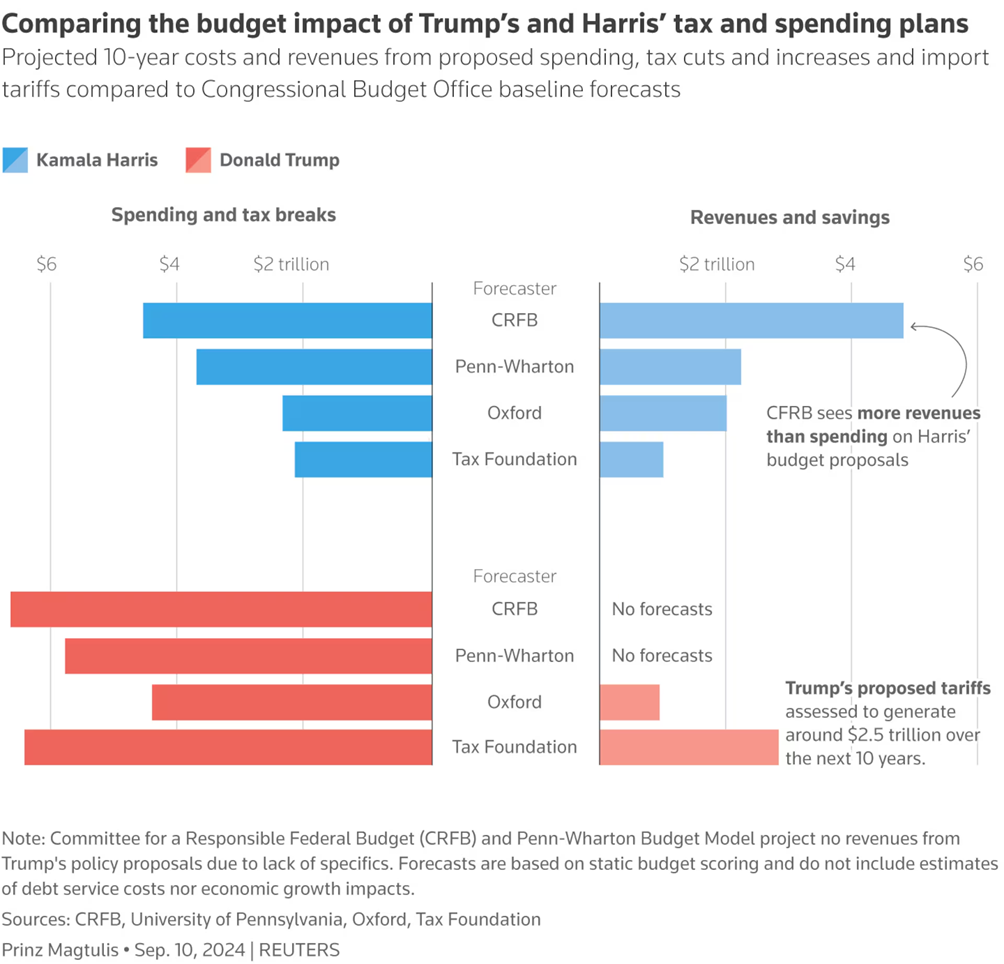Bill Gross warns on gold momentum as regional bank stocks tumble
With the US presidential elections just a few weeks away, we take a look at the economic and social program of the Democratic candidate for the White House.
Following the interest rate cut announced by the Federal Reserve last Wednesday, attention is now turning back to the next big event in the United States: the US presidential election. On 5 November, voters will go to the polls not only to elect their future president but also to shape the country's future policies and reforms.
Initially planned as a rematch of the 2020 election between President Joe Biden and former President Donald Trump, the race took a different turn when Biden withdrew at the end of July, leaving his vice-president Kamala Harris to run as the Democratic candidate. As the election approaches, Harris' economic program, commonly known as “Kamalanomics”, is gaining visibility. This article explores its main pillars.
1. Tax Policy
Kamala Harris's tax policy aims to support low- and middle-income households. Her plan is part of a wider effort to reduce income inequality and distribute the tax burden more fairly. The program of support for modest-income families and households will be financed by an increase in taxes on large companies and wealthy individuals. In keeping with Joe Biden's administration, Harris has pledged not to raise taxes on those earning less than $400,000 a year. She also proposes to abolish federal taxes on tips, in order to reduce the tax burden on service sector workers.
The Democratic candidate also promises to reinstate and expand the tax credit for households with children, which was introduced by the Biden administration in 2021 but expired the following year.
Harris wants to make the credit permanent, offering up to $3,600 per child and introducing a $6,000 credit for families with children under the age of one.
While Harris's plan reduces the tax burden on middle- and modest-income families, it transfers a larger share of that burden to the wealthier and to big business. Her program includes partially reversing the tax cuts adopted under Trump in 2017, raising the corporate tax rate from 21% to 28%, which would be one of the highest rates among advanced economies. Donald Trump, on the other hand, is advocating a further reduction in this rate to 15%.
2. Measures for the Housing Market
Access to housing is one of the most pressing issues of this presidential election. According to Zillow, the US has a housing deficit of 4.5 million homes, and Bloomberg reports that home ownership is now more difficult for middle-income earners than at any time in the past 17 years. Harris's plan tackles both sides of this crisis: supply and demand.
On the demand side, the Harris plan proposes up to $25,000 in down payment assistance for first-time buyers, with additional support for first-generation buyers. It also includes a $10,000 tax credit for first-time buyers.
On the supply side, Harris aims to improve access to housing by increasing supply and reducing rental costs.
Her program calls for the construction of 3 million new homes over the next four years, with tax incentives to encourage the building of affordable housing and homes for first-time buyers. She is also proposing the creation of a $40 billion innovation fund to stimulate new construction methods and convert underused federal land into affordable housing.
In addition, Harris intends to combat rising rents by banning the algorithmic tools used by landlords to artificially manipulate prices, and by abolishing the tax breaks granted to investors who buy up single-family homes in bulk.

3. Tackling Price Gouging
Price gouging refers to the practice of excessively increasing the prices of essential goods, often in times of crisis or shortage. Kamala Harris has been compared to President Nixon, when he imposed price controls in 1971 in an attempt to curb inflation. However, Harris' approach is quite different. Rather than imposing across-the-board controls on all sectors, Harris is focusing specifically on combating abusive price rises in the food sector, where the big chains continue to maintain high prices despite stable production costs.
Her plan calls for a federal ban on price gouging in the food industry, giving the Federal Trade Commission (FTC) and state attorneys general the power to investigate and punish companies that gouge consumers by inflating prices. It also intends to tackle corporate concentration in the food industry. Her program includes measures to combat certain mergers and acquisitions while supporting small businesses, farmers and independent grocery shops to ensure a fairer market for consumers.
Although the measures against excessive price increases are often described as populist political gestures, they are already being applied in 37 of the 50 US states.
In Texas, for example, businesses are banned from ‘charging an exorbitant or excessive price’ for essential goods such as food and fuel during crises.
Source: Data for Progress
4. Healthcare
Kamala Harris' healthcare policy focuses on reducing the cost of prescription drugs and easing the financial burden of medical care. One of her proposals is to extend the $35 monthly cap on insulin, as well as the $2,000 annual limit on out-of-pocket drug expenses, to include all Americans, not just those on Medicare.
In addition, Harris wants to speed up Medicare's negotiations on drug prices to bring down the cost of treatment more quickly. She plans to target drug manufacturers and pharmacy benefit managers who engage in anti-competitive practices or block access to affordable alternatives.
Furthermore, Harris plans to work with states to forgive the medical debts of millions of Americans and to prevent these debts from accumulating in the future, because, as stated in her official program, ‘no one should go bankrupt simply because they had the misfortune to get sick or hurt’.
5. Immigration
Kamala Harris supports the bipartisan Border Security Act, which aims to improve border management by increasing staffing levels, while tackling critical issues such as fentanyl trafficking.
Her priorities include comprehensive immigration reform, including ‘earned citizenship’ for undocumented immigrants who have lived in the United States for many years and are active contributors to American society and the economy
Harris also intends to abolish state programs that allow local law enforcement to act as immigration agents, as part of her commitment to protecting the rights of immigrants.
6. Tariffs
The need to confront China's aggressive mercantilism is one of the rare points of agreement between Democrats and Republicans. Under the Biden administration, with Kamala Harris as Vice President, several measures were taken to restrict US technology exports to China, while increasing tariffs on strategic Chinese imports, such as semiconductors, electric vehicles, steel and medical products.
If elected, Kamala Harris intends to maintain these tariffs and trade restrictions, while considering introducing new targeted tariffs in key sectors. She also proposes to increase support for domestic industries in order to further protect the US economy from foreign competition.
7. Budget Deficits
In the first, and potentially last, presidential debate between Kamala Harris and Donald Trump, issues such as immigration and geopolitics were discussed. However, one fundamental subject was omitted: the budget deficit. The programs of both candidates are expected to lead to a significant increase in the US debt, which currently exceeds 35,000 billion dollars, or 120% of GDP.
Donald Trump's promises, in particular the extension of the 2017 tax cuts and the lowering of the corporate tax rate to 15%, are estimated by the Penn Wharton Budget Model to increase the deficit by $5.8 trillion over the next ten years. Trump argues that these tax cuts will stimulate economic growth and plans to offset the loss of tax revenue with tariffs on imports.
On her side, Kamala Harris is proposing to raise taxes on large corporations and high earners to fund the expansion of her social programs. However, even with these tax increases, the deficit would continue to grow. According to Penn Wharton estimates, Harris's program would add about $1.2 trillion to the deficit over the next decade.

Source: Reuters
Conclusion
In less than two months, voters will go to the polls to elect the next President of the United States. Kamala Harris's economic program, or ‘Kamalanomics’, is based on strengthening the middle class through tax cuts, affordable housing, combating price gouging and reforming the healthcare system. Will Kamala Harris' vision convince Americans? Only time, and the verdict of the ballot box, will tell.
